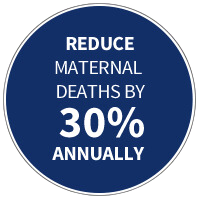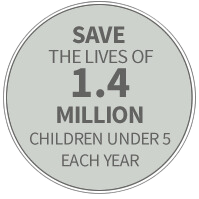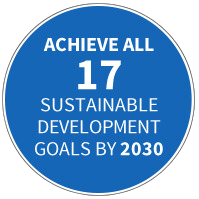Family Planning and Reproductive Health
The U.S. Agency for International Development (USAID) advances and supports voluntary family planning and reproductive health programs in 41 countries across the globe. Greater access to family planning information and services can help:




Almost 923 million women worldwide wish to avoid or delay pregnancy, and about three-quarters of these women are currently using a modern contraceptive method. Yet, more than 218 million women still have an unmet need for family planning.
When a woman has children too closely together, too early or too late in life, the health of the mother and baby are at risk. Enabling couples and individuals to determine whether, when and how often to have children is vital to safe motherhood, healthy families and prosperous communities.
Our Work
As the world's largest family planning bilateral donor, USAID is committed to helping countries meet the family planning and reproductive health needs of their people. USAID is a central partner in the Family Planning 2030 (FP2030) partnership, a global alliance aimed at empowering women and girls by investing in rights-based family planning, and the Ouagadougou Partnership, a similar effort focused on expanding family planning and reproductive health in Francophone West Africa.
When USAID launched its family planning program in 1965, fewer than 10 percent of women in the developing world (excluding China) were using a modern contraceptive method, and the average family size was over six. In the 41 countries where USAID focuses its support, modern contraceptive prevalence1 has increased to 34.4 percent2 and the average family size has dropped to 3.93. USAID's work in reproductive health also focuses on ending child marriage, female genital mutilation/cutting, gender-based violence and more.
Follow USAID's work in family planning through an interactive timeline marking some of our major milestones over the past 50 years.
Our Impact
- Fact Sheet: Family Planning Program Overview
- Former PRH Office Director Ellen Starbird: FP as A Cross-Cutting Solution in International Development
- PRH Success Stories
- Acting on the Call
- Investing in Family Planning: Key to Achieving the Sustainable Development Goals [PDF, 3MB]
- Learn more about how our public private partnerships are promoting access to voluntary family planning information and services for women and girls around the world
- Join the conversation on social media using #familyplanning
- View our USAID Medium Channel for stories from our implementing partners
- Check out our Instagram to see how USAID promotes and demonstrates democratic values abroad, and advances a free, peaceful, and prosperous world
1 Modern contraceptive prevalence is the proportion of women who are currently using, or whose sexual partner is currently using, at least one method of modern contraception.
2 From 17.1 percent in 2000
3 From 5.6 percent in 2000
Spotlight
NEW: Pathways to Progress for Sexual and Reproductive Health, 2024-2030
NEW: What Dreams May Come: A small grants competition supports locally led change
Fact Sheet: Family Planning Program Overview
Benefits of Family Planning
![]() Protects women's and children's health by reducing high-risk pregnancies and allowing sufficient time between pregnancies
Protects women's and children's health by reducing high-risk pregnancies and allowing sufficient time between pregnancies
![]() Reduces HIV and AIDS through the prevention of new HIV infections and mother-to-child transmission via increased access to voluntary family planning information, services and commodities, including condoms
Reduces HIV and AIDS through the prevention of new HIV infections and mother-to-child transmission via increased access to voluntary family planning information, services and commodities, including condoms
![]() Decreases abortion
Decreases abortion
![]() Advances individuals' rights to decide their own family size
Advances individuals' rights to decide their own family size
![]() Improves women's opportunities for education, employment and full participation in society
Improves women's opportunities for education, employment and full participation in society
![]() Reduces poverty by contributing to economic growth at the family, community and national levels
Reduces poverty by contributing to economic growth at the family, community and national levels
![]() Mitigates the impact of population dynamics on natural resources and state stability
Mitigates the impact of population dynamics on natural resources and state stability





